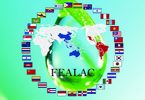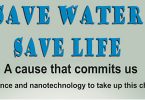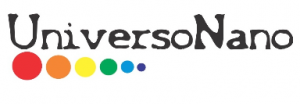
Good practices and responsible use of nanomaterials
Development of best practice guidelines for the handling of nanomaterials in research, training and technological development is becoming essential
Esperanza Guerra
Enrique Forero
Edgar E González
Increasing implementation and use of nanomaterials in research, technological development and training, urgently require to meet the issues relating to the exposure of living beings and the incorporation into the environment of these entities, which by their size, composition and properties may compromise food safety, health, water quality, air and soil.
Advances resulting from the transition to nanometric technologies have positioned the nanomaterials as one of the most important allies for the construction of the new model of technological development. The novel properties exhibited by the matter at the nanoscale [1], offer many possibilities to face the problems of the energy, environmental and health, among others.
For a large part of the offer of nanomaterials produced, there is not enough information about the potential toxic effects and environmental impact [2]. As distinguishing aspects that make them candidates to take their use and handling within the context of the precautionary principle are: size, solubility, shape, composition, structure, concentration, specific surface area, Zeta carge/potential, and capability to generate free radicals among others.
Numerous studies show that exposure to levels above certain specific thresholds, the risk is enough to abide the recommendations and observations for use and handling. For example, the toxicity of carbon nanotubes is associated with the length/diameter ratio of the tubes, the type of functionalization and rigidity among other aspects [3]. In the list of classification IARC Monographs on the Evaluation of Carcinogenic Risks to Humans -International Agency for Research on Cancer-, multi-walled carbon nanotubes MWCNT-7 have been classified as IARC Group 2B carcinogens (possibly carcinogenic to humans). The single-walled carbon nanotubes are classified as IARC Group 3 (not classifiable as to its carcinogenecity to humans).
Nanomaterials of high utilization such as titanium dioxide can produce inflammation and genotoxicity. It has been classified as an IARC Group 2B carcinogen [4], although it should be noted that there are not enough studies to make a definitive classification.
Superparamagnetic iron oxide nanoparticles, are nano-materials used in medicine for their remarkable benefits and advantages in imaging, drug delivery, and hyperthermia. However, some studies show potential DNA damage and oxidative stress [5]. All these results, although inconclusive, obligate to increase efforts in research on toxic effects of nanomaterials.
In some research or training institutions, handling and management of waste from nanomaterials are not properly protocolized, which poses a potential problem in terms of the safety of students, researches or workers exposed. Protection and waste management in research activities, technological and industrial development that make use of nanomaterials, are required. In some cases, protection elements used for handling conventional chemicals, are not sufficient.
One of the causes that provoke the omission of good practice in the use and handling of nanomaterials, is the insufficient availability of local guides and manuals on protection and waste management as well as properly structured documents and socialization on potential toxicological effects and environmental impact. It is also worth mentioning the lack of regulations and normativity on this issue.
Some countries have already developed guidelines on safe handling of nanomaterials, regulation and good practices.
In 2007 the Federal Institute for Occupational Safety and Health and the German Chemical Industry Association conducted a review of occupational health and safety methods currently applied in the chemical industry in activities involving nanomaterials, and provided specific orientations regarding measures in the production and use of nanomaterials in the workplace [6].
The United States is one of the most active countries in this matter as illustrated in Table 1. In 2004 the Draft Health Safety Guidelines for Nanotechnology research was published by the University of California. In 2008, the Massachusetts Institute of Technology elaborated the document: Best Practices for Handling Nanomaterials in Laboratories. This document highlights the following recommendations [7]:
“Know the existing toxicity information available for your nanomaterial. Be aware that many MSDSs currently shipped with nanomaterials refer to the bulk material toxicity information, which is inappropriate for the nanomaterial. If no information is available for your materials or the toxicity information is limited or uncertain, handle the material as if it is toxic“.
“Preplan the experiments and determine equipment and procedures needed to factor in all the items discussed below. These include equipment and procedures to prevent inhalation, skin or ingestion exposures, to prevent laboratory contamination, and to properly dispose of all nanomaterial waste. Have appropriate spill materials on hand before beginning your work. Equipment setup may require additional exhaust ventilation and installation or the use of respirators“.
“Prevent Inhalation exposure during all handling of nanomaterials. All free particulate nanomaterials should be worked with in exhausted enclosures which may include fume hoods, glove boxes, Class II Type A2, B1 or B2 biosafety cabinets, reactors and furnaces. Procedures involving manipulation of nanomaterials as free particles should be carefully conducted so that no release into the laboratory air occurs. Manipulation of free nanoparticulate on the lab bench should be avoided. Work with suspensions of nanoparticles that are subjected to processes that generate aerosols should be performed in exhausted enclosures.
Fume Hoods when using a fume hood to contain dust or aerosols of nanomaterials, follow good fume hood use practices such as working 6” back from sash, working with sash below the chin, removing arms slowly from hoods to prevent dragging out contaminants, and not blocking the lower back slot with equipment.
Biosafety Cabinets. Only Class II type A2, B1 or B2 biosafety cabinets which are exhausted into the building ventilation system may be used for nanomaterials work. BSCs that recirculate into the room may not be used. There is recirculation of air inside type A2 and B1 cabinets, so care should be taken not to perform extremely dusty processes in these cabinets as the internal fans of the BSC are not explosion proof. The air in the type B2 cabinet is 100% exhausted and standard amounts of nanomaterials and solvents may be used in this type of enclosure. The EHS Office should be consulted when considering a biosafety cabinet for control of nanomaterials.
Ventilation for furnaces and reactors should be provided to exhaust gasses generated by this equipment. If possible, the exhaust gasses should be run through a liquid filled bubbler to catch particulate before it enters the building ventilation system. Parts removed from reactors or furnaces for cleaning that may be contaminated with nanomaterial residue should be repaired or cleaned in a fume hood or other type of exhausted enclosure.
Ventilation for large equipment or engineering processes: Equipment that is too large to be enclosed in a fume hood can be set up such that specially designed local exhaust ventilation can capture contaminants at points where emission is possible. Also custom enclosures can also be designed by local vendors to contain potential emissions. Call the EHS Office for evaluation and design of specialized local exhaust ventilation systems.
Nanomaterial Transport in the Lab. Nanomaterials removed from furnaces, reactors, or other enclosures should be put in sealed containers for transport to other locations. If nanomaterial product from a reactor is bound or adhered to a substrate, the substrate may be removed and put in a transport container. If the nanomaterials product is unbound and easily dispersible (such as in CNT synthesis using aerosolized catalyst), the removal from a reactor should be done with supplementary exhaust ventilation or a glove bag connected to a HEPA vacuum”.
“Prevent Dermal Exposure to Nanomaterials. The ability of nanoparticles to penetrate the skin is uncertain at this point, so gloves should be worn when handling particulate and suspensions containing particulate. If working with dry particulate, a sturdy glove with good integrity should be used.
“Use Eye Protection. Wear eye protection appropriate to the experimental conditions (for example, safety glasses, goggles, or face shields)”.
In 2009 the Best Practices Guide to Synthetic Nanoparticle Risk Management, appeared in Canada. In it “the authors favour a preventive approach aimed at minimizing occupational exposure to NPs (nanoparticles) when their risk assessment cannot be established precisely” [8]. The guide includes, inter alia: identification of dangers, risk assessment, laws, regulations and obligations of the parties, working safely with nanoparticles. The exposition by inhalation of NPs of few nanometers causes that these entities will be deposited in the nose and thorat, and NPs of 15-20 nanometers will be deposited at the alveolar level [9], and later migrate to the lymphatic system and blood.
In a document produced by Ministry of Health, Labour and Welfare of Japan in 2009, the preventive measures against exposure of nanomaterials were established [10]. It is emphasized that on the basis of the precautionary approach, it is important to increase the efficacy of exposure prevention practices and to understand the properties of nanomaterials. Aspects such as working environment management, installations, examinations of the concentration of nanomaterials in workplaces, cleanning of floors, use of protective equipment, dissemination of information on nanomaterials, among others, are considered.
The Departament of Science and Technology of the Indian Government published in 2011 the Guidelines and Best Practices for Safe Handling of Nanomaterials in Research Laboratories and Industries [11]. This guide contains the identification of hazards, pathways and common activities that could result in exposure, exposure control strategies, best practices to be followed while handling nanoparticles, best practices and adequate approaches regarding making and handling nanopowders and use of products relating to food and healthcare, safety practices and product stewardship.
Spain has contributed with varius reports and guidelines on risk and good practice associated with nanomaterials. Between 2012 and 2013 the Tecnalia Foundation developed a practical manual of risks for health and safety in the work place arising from the manipulation of nanomaterials [12]. In the manual, the following issues are addressed:
Nano-objects and nanomaterials, toxicology, security and health aspects, use of nanomaterials and exposure scenarios, risk assessment, prevention and protection, regulations and standards.
in addition, the mini-guide on best practices for the safe handling and use of nanoparticles made by the Consorsio NanoSafe Pack should be mentioned.
In Latin America, some countries have advanced in the preparation of guides, although none has been yet published. In Colombia, the Network of Nanoscience and Nanotechnology (Red NanoColombia) [13] through its National Advisory Council is working on the elaboration of a guide to be submitted for evaluation and possible implementation in laboratories and universities.
CONCLUSION
There is no doubt about the importance and the crucial role that nanoscience and nanotechnology will play in seeking solutions to the main problems faced by the society of the XXI century. However there is an urgent need to produce guidelines for the responsable use of these emerging technologies, particularly regarding the handling and waste management related to nanomaterials..
This implies increasing efforts to find enough information on their toxic effects on living organisms, lifecycle and potential impacts on the environment.
This will prevent the inappropriate use of nanomaterials in consumer products and industry, from becoming a problem that later we need to remedy.
References
[1] González, E. J. Nano Sci. Tech., 1, 48 (2013).
[2] Liu, Y., Zhao, Y., Sun, B., & Chen, C. Acc. Chem. Res. 46 (3), 702-713 (2013).
[3] Kostarelos, K. Nature Nanotechnology, 26, 774- 776 (2008).
[4] International Agency for Research on Cancer (IARC). List of classifications in: http://monographs.iarc.fr/ENG/Classification/latest_classif.php
[5] Singh, N., et al., Nano Rev., 1, 5358 (2010).
[6] http://www.baua.de/en/Topics-from-A-to-Z/Hazardous-Substances/Nanotechnology/pdf/guidance.pdf?__blob=publicationFile
[7] https://ehs.mit.edu/site/sites/default/files/files/University_Best_Practices.pdf
[8] Ostituy, C., et al. Best Practices Guide to Synthetic Nanoparticle Risk Management. IRSST -Communications Division (2009).
[9] Ostiguy, C., et al. Nanoparticles: Current Knowledge about Occupational Health and Safety Risks and Prevention Measures, Studies and Research, IRSST, Report R-470 (2006).
[10] http://www.jniosh.go.jp/oldsite/joho/nano/files/mhlw/Notification_0331013_en.pdf.
[11] CKMNT. Guidelines and Best Practices for Safe Handling of Nanomaterials in Research Laboratories and Industries. Report. http://nanomission.gov.in/What_new/Draft_Guidelines_and_Best_Practices.pdf
[11] http://energy.gov/ (Office of Energy Efficiency and Renewable Energy)
[12] http://www.osalan.euskadi.eus/contenidos/informacion/presentacion_proyectos_investi/
es_jt120903/adjuntos/proyecto_tecnalia.pdf
[13] www.rednanocolombia.org
__________________________
Esperanza Guerra
Academia Colombiana de Ciencias Exactas Físicas y Naturales E-mail: leguerrag@unal.edu.co
Enrique Forero Ph.D.
Academia Colombiana de Ciencias Exactas Físicas y Naturales Consejo Nacional Asesor de Nanociencia y Nanotecnología Red Nanocolombia E-mail: enriqueforero2003@yahoo.com
Edgar E González Ph.D.
Instituto Geofísico, Facultad de Ingeniería, Pontificia Universidad Javeriana. Nanoscalar Science and Technology Center. Academia Colombiana de Ciencias Exactas Físicas y Naturales. Consejo Nacional Asesor de Nanociencia y Nanotecnología Red Nanocolombia. E-mail: egonzale@javeriana.edu.co
You may also like

The Bio-Nano Offer and its Imp..
The impact on environmental, energy, agriculture, and health issues is evaluated
read more
Cbionano-FEALAC Bio-Nano Conv..
Environment and Energy: Challenges and opportunities from bio and nanotechnology For the Network’s Phase 1 […]
read more
Save Water, Save Life
Integrates students from schools in the search of solution and active participation in the mission […]
read more















Leave a Reply